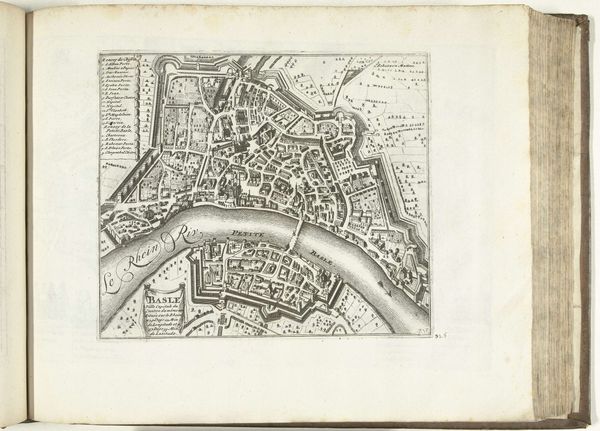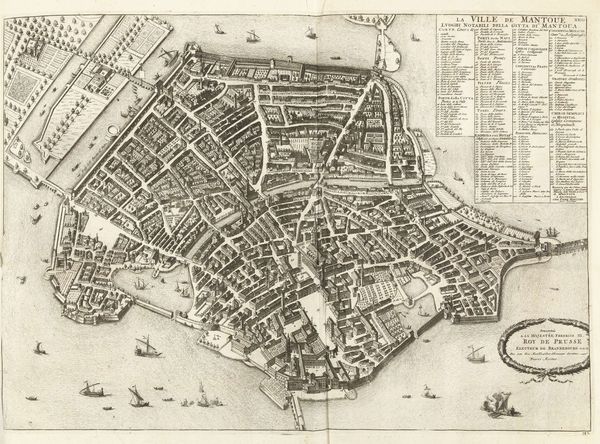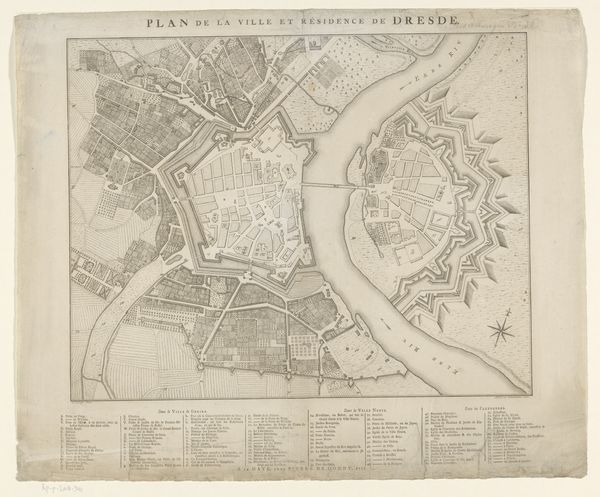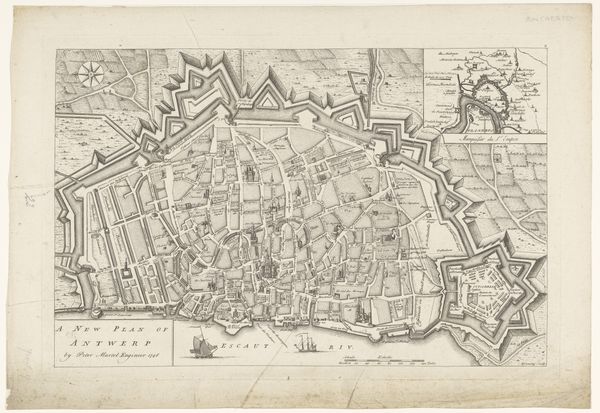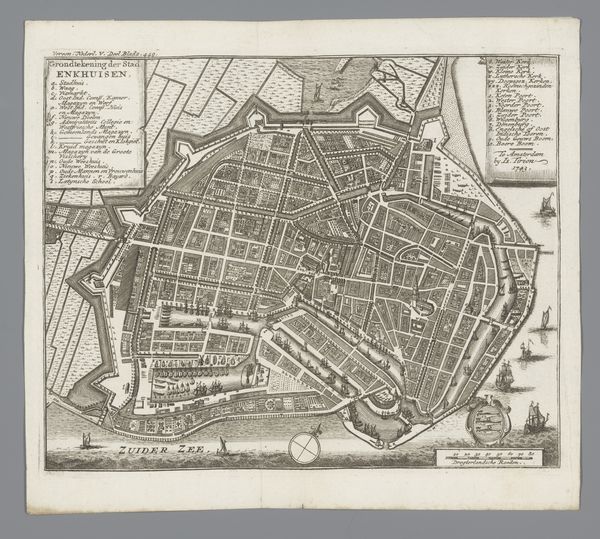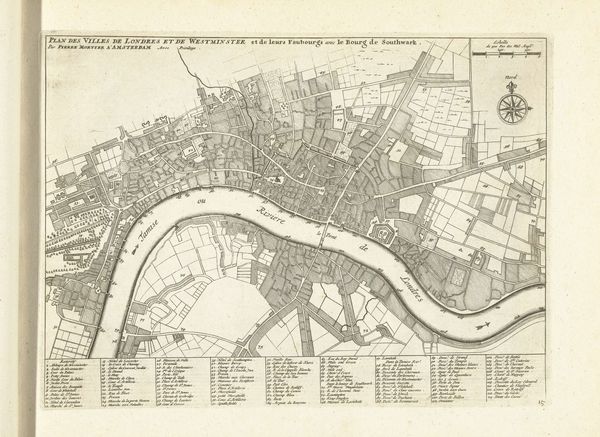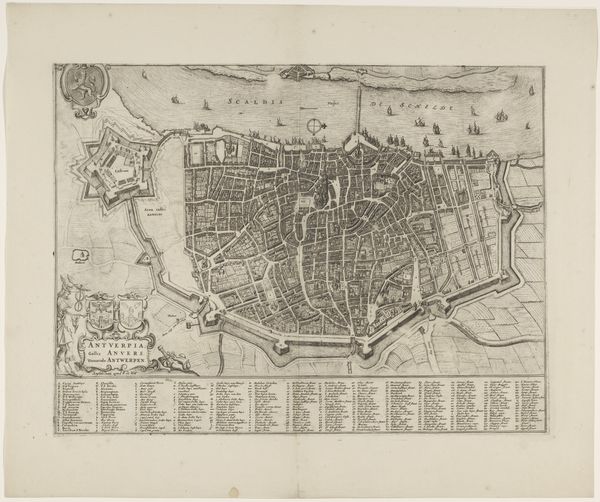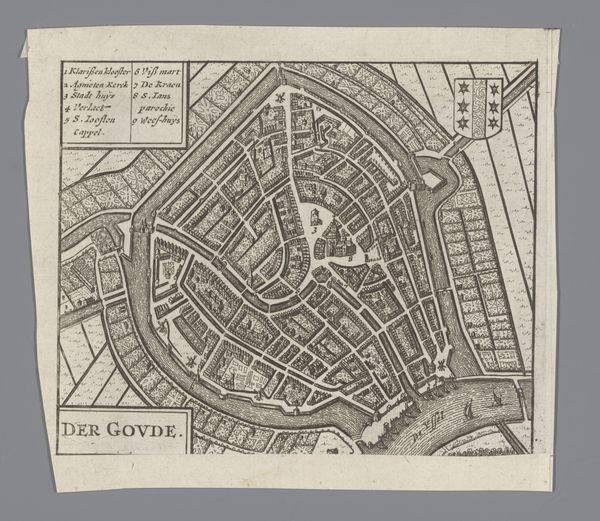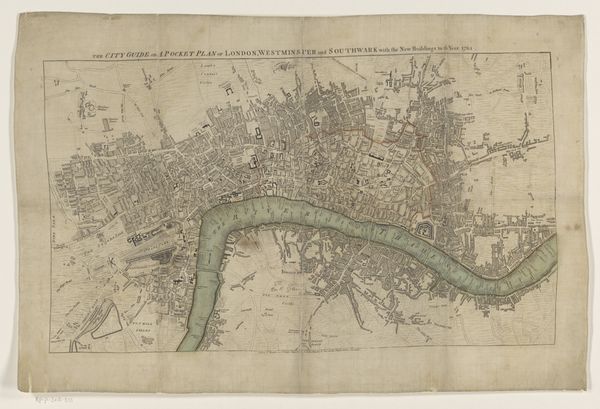
drawing, print, engraving
#
drawing
#
baroque
#
pen drawing
#
mechanical pen drawing
# print
#
pen illustration
#
pen sketch
#
old engraving style
#
personal sketchbook
#
geometric
#
pen-ink sketch
#
line
#
pen work
#
sketchbook drawing
#
cityscape
#
history-painting
#
storyboard and sketchbook work
#
engraving
Dimensions: height 275 mm, width 352 mm
Copyright: Rijks Museum: Open Domain
Curator: This print, "Plattegrond van Londen na de grote brand van 1666," by Wenceslaus Hollar, is an incredible document of devastation and urban transformation. What strikes you about it? Editor: The sheer amount of detail! You can trace the streets, and it’s almost chilling how the burnt areas are depicted as these empty spaces. I guess the map wasn’t just a representation, it became a tool in reshaping the city, right? How do we consider this print in relation to, say, contemporary methods of urban planning? Curator: Exactly! It’s not merely a picture, but an instrument of power, reflecting the rebuilding efforts after the fire. Think about the labour involved in creating this map. How did the printmaking process—etching, engraving—influence the representation of the city and how did it influence the rapid dissemination of knowledge, about loss and possibilities? What kind of skills, materials and economy are embedded here? Editor: So it's not just about artistry but also the tangible creation of knowledge? Curator: Precisely. And whose knowledge is being circulated? The act of surveying, engraving, and printing solidifies certain perspectives and allows it to become widely shared. How would this shape popular discourse? It influences resource distribution. It reflects economic imperatives through how materials are managed to control, or rebuild in this instance, a city. This also challenged older forms of authority to develop more specialized professions involved with printmaking. Editor: So the materials and means of production are inextricably linked to the map's authority? That shifts my understanding of it entirely. Curator: Yes! It's a complex object – beautiful, tragic, and instrumental. This challenges preconceived boundaries by showing how ‘low’ forms like labor and economy come together to impact what’s traditionally thought to be “high” art like prints or drawing. Editor: This conversation highlighted the significance of material and processes behind the art piece, instead of a primary focus on symbolism, this opened up new possibilities for me to interpret art pieces! Curator: Indeed! Examining the materials can deepen the engagement!
Comments
No comments
Be the first to comment and join the conversation on the ultimate creative platform.
